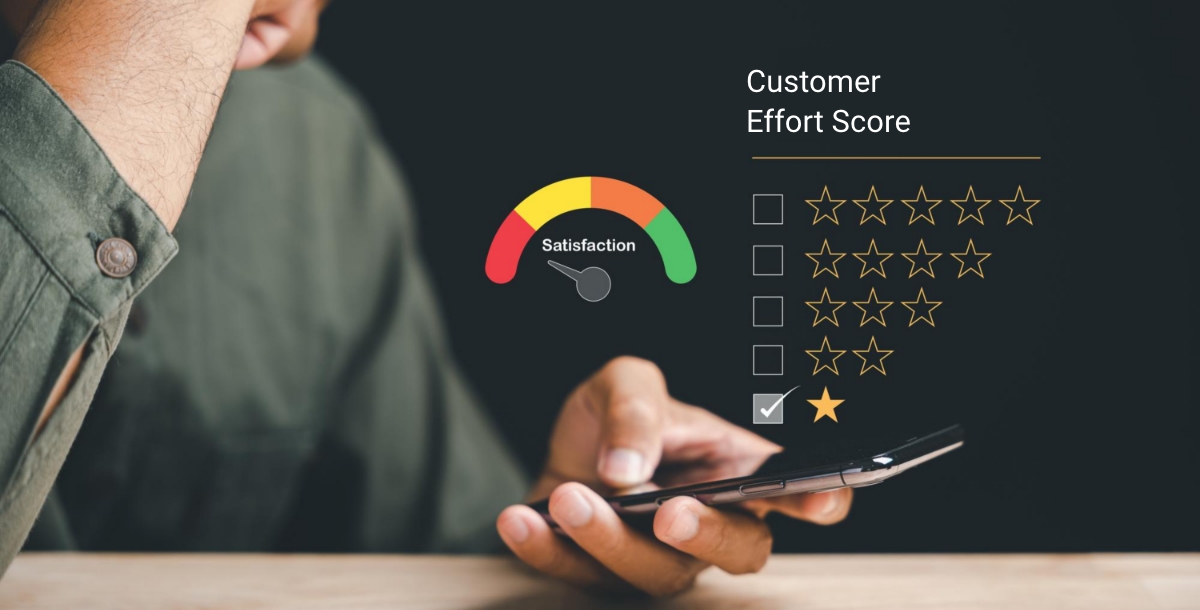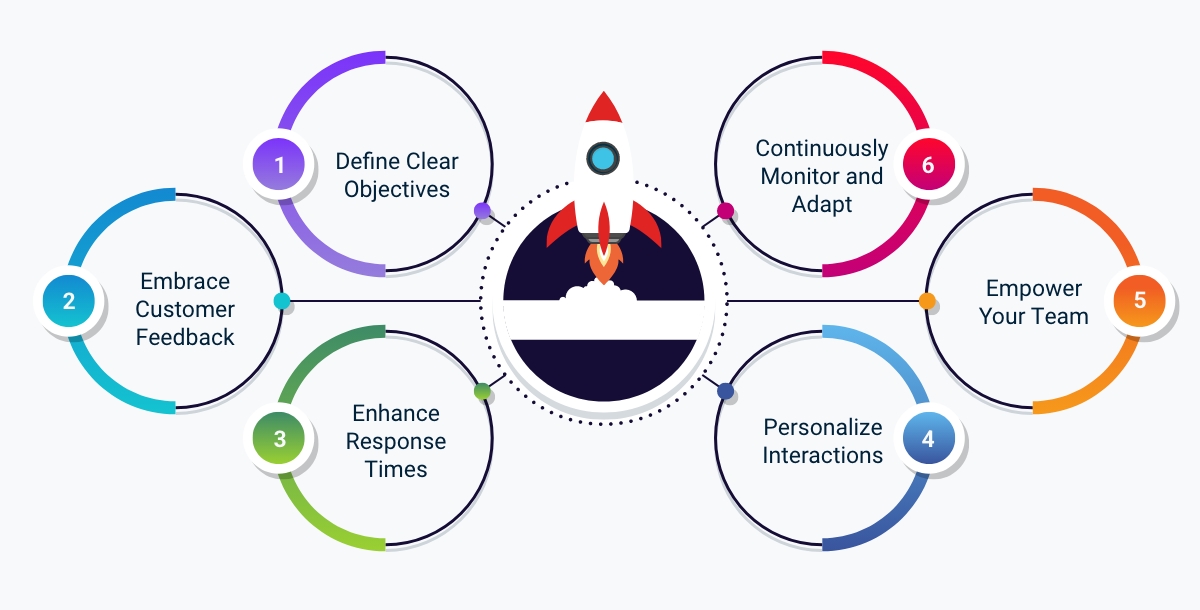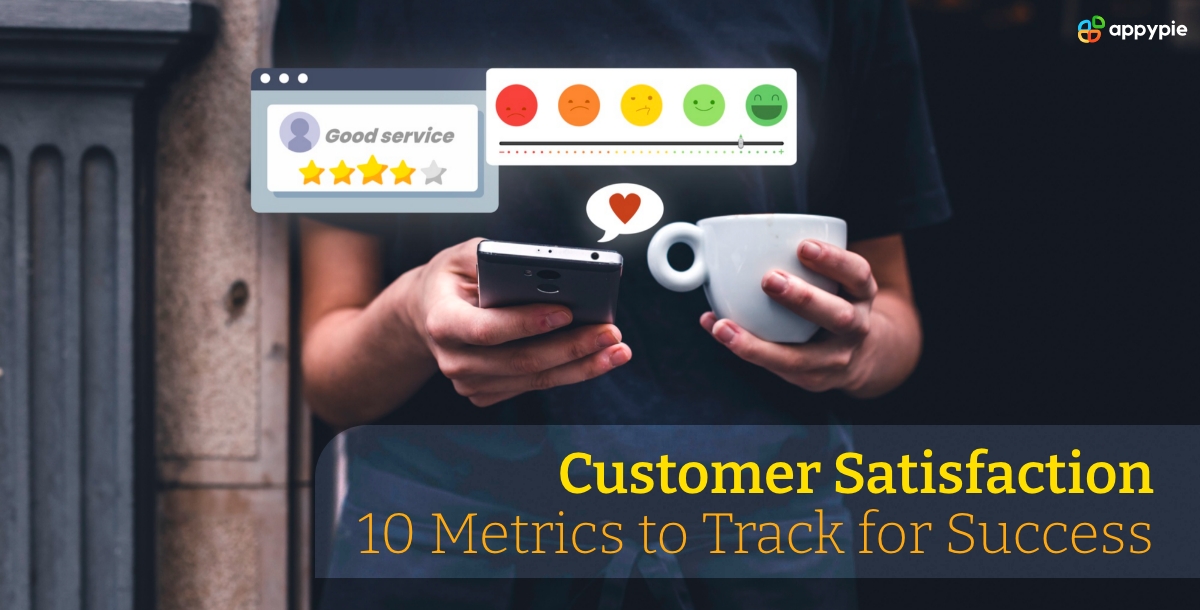Customer Satisfaction: 10 Metrics to Track for Success

Customer satisfaction is crucial for the long-term success of any business. It's about more than just providing a product or service; it's about creating a positive, memorable experience that keeps customers coming back and building customer loyalty.
So, how do you measure customer satisfaction, and what customer satisfaction metrics should you track to ensure your business is on the right path? In this blog, we'll explore the importance of customer satisfaction and dive into 10 key metrics that will help you gauge and improve the overall customer experience. From understanding their expectations to tracking their feedback, these metrics will provide valuable insights to enhance your business strategies and create a customer-centric culture.
By the end of this article, you'll have a clear understanding of which metrics to monitor and how to use them to boost customer satisfaction and loyalty. Let's get started on this journey toward unlocking exceptional customer satisfaction!
Table of Contents
What is Customer Satisfaction?
Customer satisfaction is the degree to which a customer is happy with a product, service, or experience provided by a business. It is a key indicator of customer loyalty, repeat business, and word-of-mouth promotion. Satisfied customers are more likely to continue doing business with a company, recommend it to others, and provide valuable feedback for improvement.
Measuring customer satisfaction is crucial for any business as it provides insights into customer needs, wants, and expectations. By tracking customer satisfaction metrics, businesses can identify areas for improvement, make data-driven decisions, and create a customer-centric culture that drives growth and success.
Related:Sales CRM: Your Secret Weapon for Customer Satisfaction & Sales Growth
Customer Satisfaction Metrics: Definition
Customer satisfaction metrics are specific, measurable data points that businesses use to gauge customer sentiment and satisfaction levels. These metrics can be quantitative, such as survey scores or response times, or qualitative, such as customer feedback and reviews. By tracking a variety of customer satisfaction metrics over time, businesses can gain a comprehensive understanding of their customer's experiences and identify areas where they can improve.
Also Read:Building Bonds: 10 Ways to Build Customer Loyalty
10 Customer Satisfaction Metrics to Check
Customer satisfaction is a key indicator of customer loyalty and repeat business. By tracking the right customer satisfaction metrics, businesses can gain valuable insights into their customers' experiences and identify areas for improvement. Here are 10 key customer satisfaction metrics to track:
- Customer Satisfaction Score (CSAT)
- Net Promoter Score (NPS)
- Customer Effort Score (CES)
- Customer Churn Rate
- Customer Complaint Rate
- Resolution Time
- First Response Time
- Customer Expectations Met
- Customer Satisfaction Index (CSI)
- Social Sentiment Analysis

CSAT is a versatile metric that can be applied to various interactions, such as post-purchase surveys, technical support ratings, or event feedback. It provides a clear indication of how satisfied customers are with their experience. A high CSAT score demonstrates that your business is meeting or exceeding customer expectations. For example, an online retailer might ask, "How would you rate your overall shopping experience?" with response options ranging from "Very dissatisfied" to "Very satisfied." CSAT is often calculated as a percentage of satisfied customers, making it easy to track and compare over time.

NPS is a powerful tool for understanding customer loyalty and advocacy. By asking customers how likely they are to recommend your company or product, you gain insight into their overall satisfaction and loyalty. Promoters (scores of 9-10) are enthusiastic and likely to spread positive word-of-mouth, while detractors (scores of 0-6) may indicate areas of improvement. For instance, a software company might ask, "How likely are you to recommend our project management tool to a colleague?" NPS is calculated by subtracting the percentage of detractors from promoters, giving a clear indication of brand loyalty.

CES focuses on the ease of doing business with your company. It measures the perceived level of effort a customer has to exert to resolve an issue, make a purchase, or use your product. A low CES indicates a seamless and intuitive experience. For example, a tech company might ask, "How easy was it to set up your new laptop?" with response options ranging from "Very difficult" to "Very easy." By tracking CES, you can identify areas where processes can be simplified, thereby enhancing the overall customer experience.

Churn rate is a critical metric that measures the percentage of customers lost during a specific period. A high churn rate is a strong indicator of customer dissatisfaction. For instance, a subscription-based business might calculate its monthly churn rate by dividing the number of canceled subscriptions by the total active subscriptions at the beginning of the month. Tracking churn rate helps identify potential issues with customer retention and provides an opportunity to address underlying causes of dissatisfaction.

This metric sheds light on the volume and frequency of customer complaints or negative feedback. A high complaint rate may suggest widespread dissatisfaction or recurring issues. For example, a telecom company might track the number of complaints received about billing errors or network issues. Analyzing and addressing these complaints is essential for improving customer satisfaction and retaining customers. Monitoring this metric can also help identify trends and potential areas of concern.

This metric evaluates the efficiency and responsiveness of your customer support team. It measures the average time taken to resolve customer queries or issues. Quick resolution times demonstrate a commitment to customer satisfaction and can set your business apart. For instance, an e-commerce company might track the average time taken to resolve product return requests. By setting clear targets for resolution time, you can manage customer expectations and improve overall satisfaction.

This metric focuses on the timeliness of the initial response to a customer inquiry. A swift first response reassures customers that their issue is being addressed promptly. For example, a help desk support team might track the average time taken to provide an initial response to customer emails. Monitoring this metric ensures that customers feel valued and that their queries are being prioritized. It also helps set realistic customer expectations and service standards.

This metric assesses whether your business is delivering on its promises and meeting customer expectations. It can be measured through surveys or feedback forms that ask customers if their experience matched, fell short of, or exceeded their expectations. For instance, a restaurant might ask, "Did your dining experience meet your expectations?" Meeting or exceeding expectations is key to building customer loyalty and positive word-of-mouth.

CSI provides a comprehensive view of customer satisfaction across multiple touchpoints. It considers various factors, including product quality, value for money, customer service, and overall experience. For example, an automotive company might track CSI by evaluating customer satisfaction with the sales process, vehicle performance, and after-sales service. CSI gives a holistic perspective, helping identify areas that need improvement to enhance the overall customer journey.

With the rise of social media, monitoring customer sentiment on these platforms is crucial. Social sentiment analysis involves tracking mentions, comments, reviews, and ratings on social media channels. It provides valuable insights into overall customer sentiment toward your brand. For instance, a retail company might analyze customer reviews on its social media pages to gauge satisfaction with its latest product line. This metric can help identify potential issues, manage online reputation, and understand customer perceptions.
Suggested Read:Customer Service Objectives: Definition and Key Elements of Good Customer Service
By tracking and analyzing these 10 customer satisfaction metrics, businesses can gain valuable insights, identify areas for improvement, and make data-driven decisions to enhance the overall customer experience. These metrics provide a comprehensive view of customer satisfaction, enabling businesses to create a customer-centric culture and drive long-term success.
How to Boost Your Customer Satisfaction Metrics Score
Customer satisfaction metrics are crucial for understanding your customers' experiences and pinpointing areas for improvement. But simply tracking these metrics isn't enough. You need a strategic approach to consistently improve your scores. Here's how to boost each key customer satisfaction metric:

- Define Clear Objectives: Establish specific and measurable goals for customer satisfaction, defining what success looks like for your business. (This remains the same)
- Embrace Customer Feedback: Actively listen to your customers through surveys, reviews, and social media interactions. Use this feedback to drive improvements and create a positive impact.
- Enhance Response Times: Strive to respond to customer inquiries and concerns promptly, demonstrating your commitment to their time and satisfaction. Consider utilizing live chat software or customer service chatbots to offer 24/7 support and reduce wait times.
- Personalize Interactions: Leverage customer data to personalize communications and experiences, making customers feel valued and understood. You can segment your audience and send targeted push notifications with relevant offers or updates.
- Empower Your Team: Invest in training and resources for your employees, enabling them to resolve customer issues effectively and confidently. Utilize a robust help desk software solution to streamline workflows, centralize customer information, and empower your team to deliver exceptional service.
- Continuously Monitor and Adapt: Regularly track your customer satisfaction metrics to identify trends and areas requiring improvement, ensuring a consistent focus on customer satisfaction. Leverage data visualization tools to gain deeper insights and identify opportunities for improvement.
By combining strategic initiatives, leveraging technology, fostering a customer-centric culture, and continuously monitoring your progress, you can cultivate a loyal customer base and achieve long-term success. Remember, customer satisfaction is a journey, not a destination. By consistently striving to improve, you can build strong customer relationships and ensure your business thrives.
Customer Satisfaction Metrics Examples
Now that we've explored the importance of customer satisfaction metrics and their role in enhancing the customer experience, let's bring these concepts to life through compelling real-world examples. Seeing these metrics in action will demonstrate their practical value and impact on business success.
Take a look at these illustrative examples that showcase how businesses strategically leverage customer satisfaction metrics to gain valuable insights, make informed decisions, and ultimately, achieve excellence in customer satisfaction. These success stories will inspire and guide your journey toward creating exceptional customer experiences.
- Example 1
- Example 2
- Example 3
- Example 4
- Example 5
A leading e-commerce company tracks its CSAT by sending surveys after each purchase and delivery. They achieve a CSAT score of 89% for the year, indicating high satisfaction with their convenient and reliable delivery services.
A popular streaming service calculates its NPS and receives a score of 55, suggesting a strong base of loyal customers who actively recommend the service to their friends and family. The company can then delve deeper and analyze the responses from detractors (customers with low NPS scores) to understand their pain points and areas for improvement.
A hotel chain focuses on improving its CES and, through streamlined check-in processes and enhanced staff training, achieves a significant increase in its CES score, resulting in higher overall customer satisfaction. They can further analyze the CES data to see if there are any specific touchpoints within the check-in process that bring down the CES score and target those areas for additional improvement.
A social media platform monitors its social sentiment analysis and identifies a surge in negative mentions about a recent design change. By promptly addressing user concerns and explaining the rationale behind the changes, the platform can mitigate negative sentiment and potentially win back dissatisfied users.
A SaaS company utilizes its customer churn rate to identify customer segments with a higher churn risk. They can then implement targeted customer retention strategies, such as personalized communication or loyalty programs, to address the specific needs of these at-risk customers and decrease churn.
These examples offer a glimpse of how customer satisfaction metrics can be practically applied to drive tangible outcomes. Each business leveraged these metrics to gain valuable insights, make data-driven decisions, and ultimately, enhance the customer experience. As you continue on your customer satisfaction journey, keep these success stories in mind and envision the positive impact you can create for your customers.
Wrapping Up
Tracking customer satisfaction metrics is crucial for businesses aspiring to deliver exceptional customer experiences. By diligently measuring and analyzing key indicators, businesses can gain profound insights, make data-driven decisions, and foster a customer-centric culture. Customer satisfaction is a continuous journey, and consistently meeting or exceeding customer expectations is the foundation of a thriving, loyal customer base. By embracing tools like those offered by Appy Pie, businesses can effectively boost their platforms. Appy Pie provides an array of software solutions, including help desk support, live chat functionality, and customer support chatbots, empowering businesses to track and enhance customer satisfaction metrics. With Appy Pie's comprehensive suite of tools, businesses can efficiently manage customer inquiries, provide prompt responses, and deliver outstanding support, ultimately elevating the overall customer experience.
Related Articles
- Designing with Cinnamon Color: Tips and Tricks
- Empowering 3D Visual Grounding with Reasoning Capabilities
- How to Download From GitHub: Files, Repositories, and Releases
- 7 Reasons Why You Should Learn To Code
- Why You Should Use Mailchimp for Email Marketing? [10 Benefits]
- Web2Code: A Large-scale Webpage-to-Code Dataset and Evaluation Framework for Multimodal LLMs
- How to Make Money with Best Online Earning Websites of 2023
- Chatbot vs. Live Chat- A Comparison Manual
- Chatbots vs. Conversational AI – Which is Right for Your Business?
- OneDrive vs. Dropbox: Which Cloud Storage Apps is Better to Use?
